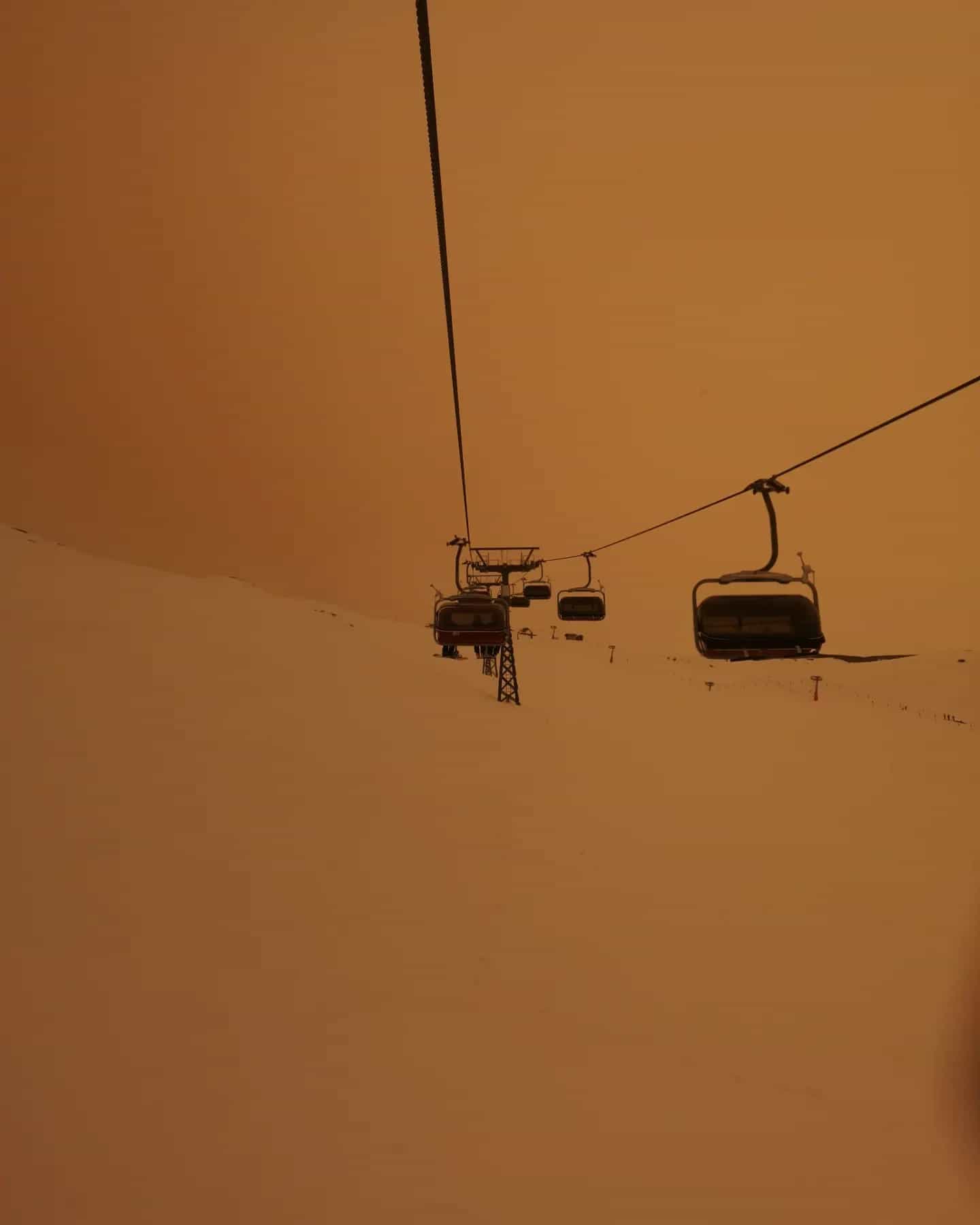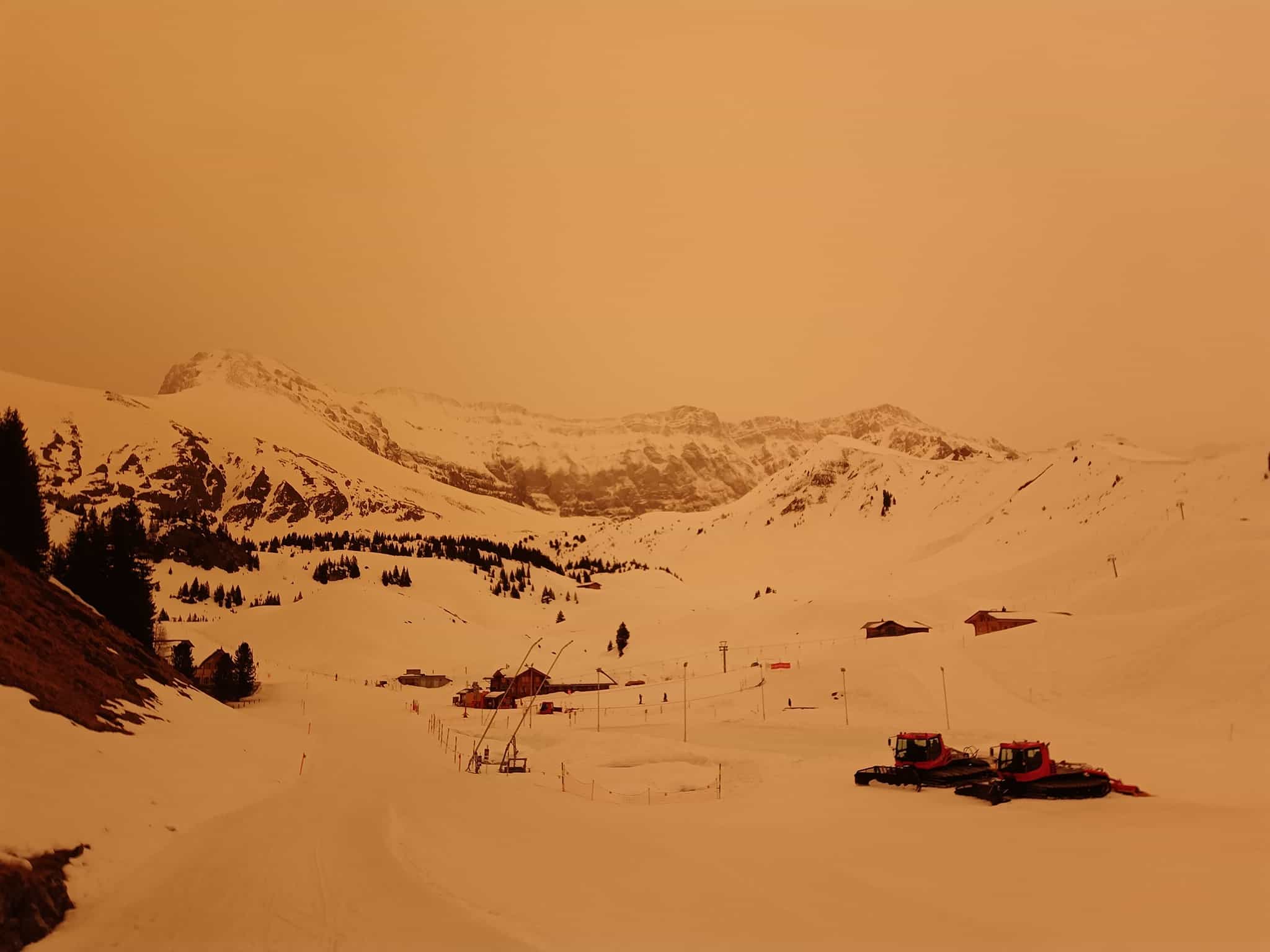Sand and dust from the Sahara desert have been carried more than 1,500 miles in the air by currents and dumped over large parts of Europe, turning ski resorts orange and reaching as far as the UK.
Strong storms across the African desert whipped-up dust turning the wintry scenes a dramatic orange color. Resorts in the French and Swiss Alps were affected and skiers were able to carve through the fallen sand.
Many images and videos were shared across social media of orange ski slopes and apocalyptic skies.
Winds also blew the Sahara over the United States in June of 2020 filling the air in Puerto Rico and Texas with particulate levels not seen in 25 years.

Atmospheric scientist, Joseph Prospero, is quoted in the Scientific American saying “It was an extremely unusual event,” along with a SnowBrains article showing the first snow in the Sahara in 37 years.
The winds often spread Saharan sands across the world. Yet these occurrences so close together and of such distinction leads one to be curious. Maybe climate change is playing a role in the effects of these peculiar weather patterns. Like desertification which has been accelerating by 25 to 30 times the historical rate. At this rate according to writing in National Geographic, 50 million people could be displaced by 2030.
Efforts to restore 386,000 square miles of the Sahara are being taken on, along with China attempting to reduce the growth of the Gobi Desert.

I think a lot of it has to do with generations of cattle having destroyed the top soil in the desert so it just blows away in the wind.
Sand &dust from OHV riders in Southern Utah sometimes coats Aspen slopes in late spring.